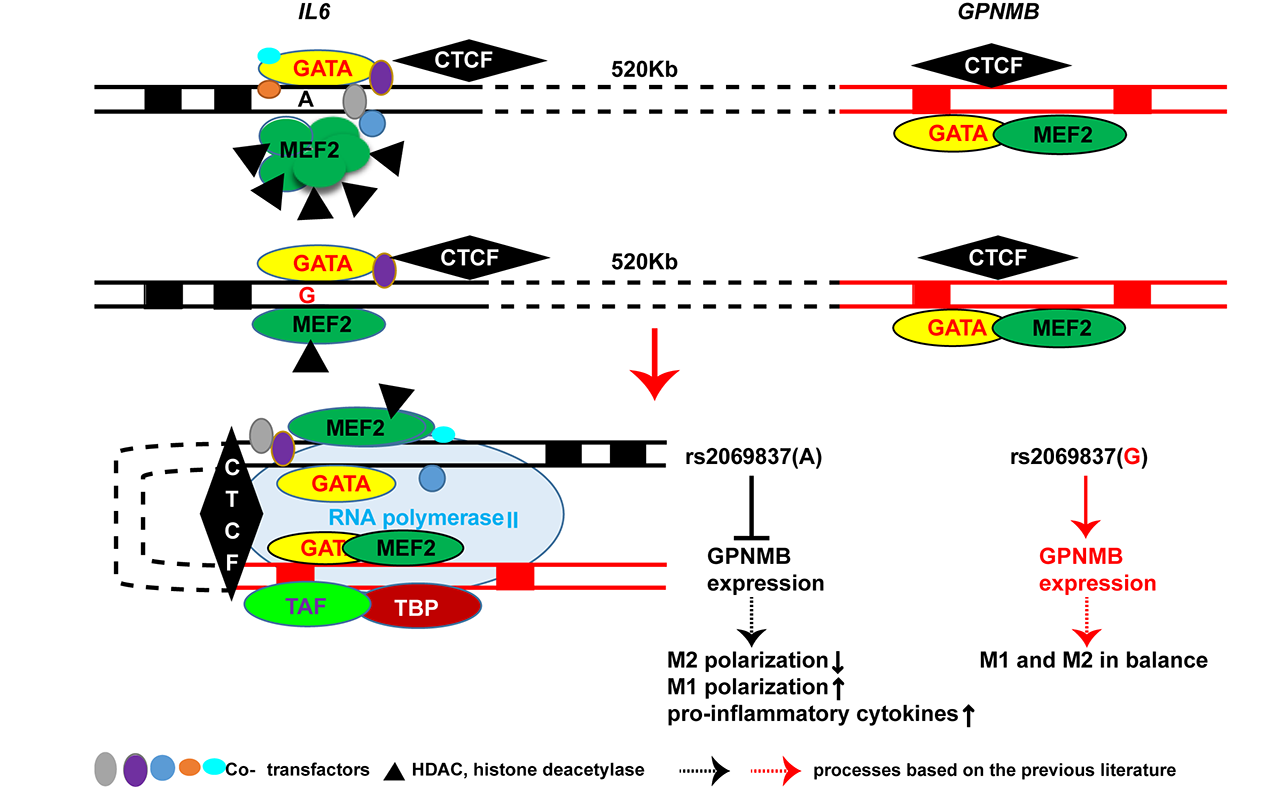Session Information
Session Type: ACR Abstract Session
Session Time: 2:30PM-4:00PM
Background/Purpose: Previous work has revealed a genetic association between Takayasu arteritis and a non-coding genetic variant in an enhancer region within IL6 (rs2069837 A/G). The risk allele in this variant (allele A) has a protective effect against chronic viral infection and cancer. The goal of this study was the characterize the functional consequences of this disease-associated risk locus.
Methods: A combination of experimental and bioinformatics tools were used to mechanistically understand the effects of the disease-associated genetic locus in IL6. These included electrophoretic mobility shift assay (EMSA), DNA affinity precipitation assays followed by mass spectrometry and western blotting, luciferase reporter assays, and chromosome conformation capture (3C) to identify chromatin looping in the IL6 locus. Both cell lines and peripheral blood primary monocyte-derived macrophages were used.
Results: We identified the monocyte/macrophage anti-inflammatory gene GPNMB, ~520kb from IL6, as a target gene regulated by rs2069837. We revealed preferential recruitment of myocyte enhancer factor 2-histone deacetylase (MEF2-HDAC) repressive complex to the Takayasu arteritis risk allele. Further, we demonstrated suppression of GPNMB expression in monocyte-derived macrophages from healthy individuals with the AA compared to AG genotype, which was reversed by histone deacetylase inhibition. Our data show that the risk allele in rs2069837 represses the expression of GPNMB by recruiting MEF2-HDAC complex, enabled through a long-range intra-chromatin looping. Suppression of this anti-inflammatory gene might mediate increased susceptibility in Takayasu arteritis and enhance protective immune responses in chronic infection and cancer.
Conclusion: Takayasu arteritis disease risk locus in IL6 might increase disease susceptibility by suppression of the anti-inflammatory gene GPNMB, which is located about 520kb away, through chromatin looping and recruitment of MEF2-HDAC epigenetic repressive complex. Our data highlight long-range chromatin interactions in functional genomic and epigenomic studies in autoimmunity.
To cite this abstract in AMA style:
Kong X, Sawalha A. Takayasu Arteritis Associated Risk Locus in IL6 Represses the Anti-inflammatory Gene GPNMB Through Chromatin Looping and Recruiting MEF2-HDAC Complex [abstract]. Arthritis Rheumatol. 2019; 71 (suppl 10). https://acrabstracts.org/abstract/takayasu-arteritis-associated-risk-locus-in-il6-represses-the-anti-inflammatory-gene-gpnmb-through-chromatin-looping-and-recruiting-mef2-hdac-complex/. Accessed .« Back to 2019 ACR/ARP Annual Meeting
ACR Meeting Abstracts - https://acrabstracts.org/abstract/takayasu-arteritis-associated-risk-locus-in-il6-represses-the-anti-inflammatory-gene-gpnmb-through-chromatin-looping-and-recruiting-mef2-hdac-complex/

